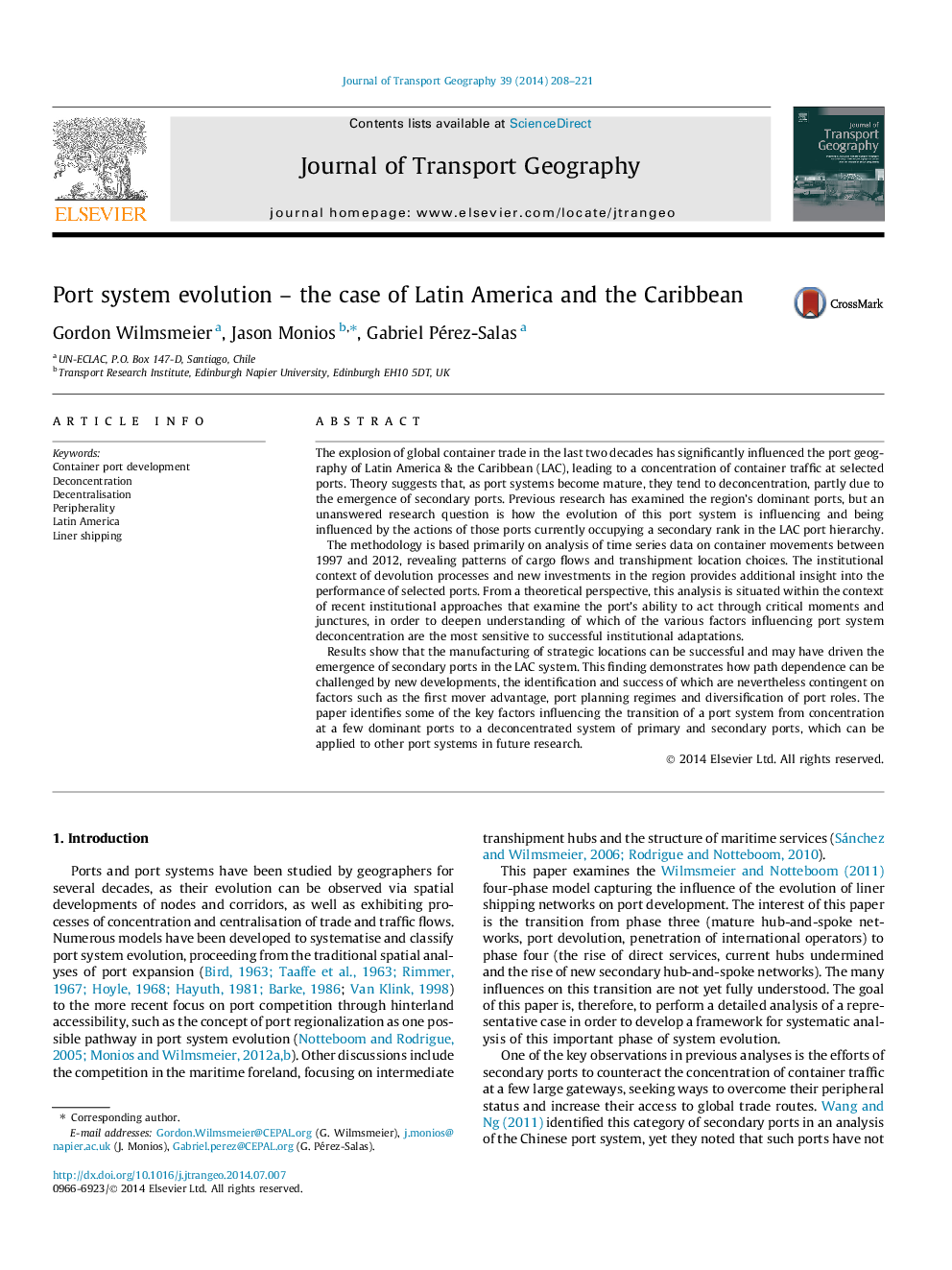| Article ID | Journal | Published Year | Pages | File Type |
|---|---|---|---|---|
| 1059210 | Journal of Transport Geography | 2014 | 14 Pages |
•Uses the LAC case to examine port system evolution.•Analyses a system moving from initial concentration towards decentralisation and deconcentration.•Explores the rise of secondary ports within a port system.•Uses the institutional literature to understand the key drivers of these processes.•Develops a framework of key drivers that can be applied in other contexts.
The explosion of global container trade in the last two decades has significantly influenced the port geography of Latin America & the Caribbean (LAC), leading to a concentration of container traffic at selected ports. Theory suggests that, as port systems become mature, they tend to deconcentration, partly due to the emergence of secondary ports. Previous research has examined the region’s dominant ports, but an unanswered research question is how the evolution of this port system is influencing and being influenced by the actions of those ports currently occupying a secondary rank in the LAC port hierarchy.The methodology is based primarily on analysis of time series data on container movements between 1997 and 2012, revealing patterns of cargo flows and transhipment location choices. The institutional context of devolution processes and new investments in the region provides additional insight into the performance of selected ports. From a theoretical perspective, this analysis is situated within the context of recent institutional approaches that examine the port’s ability to act through critical moments and junctures, in order to deepen understanding of which of the various factors influencing port system deconcentration are the most sensitive to successful institutional adaptations.Results show that the manufacturing of strategic locations can be successful and may have driven the emergence of secondary ports in the LAC system. This finding demonstrates how path dependence can be challenged by new developments, the identification and success of which are nevertheless contingent on factors such as the first mover advantage, port planning regimes and diversification of port roles. The paper identifies some of the key factors influencing the transition of a port system from concentration at a few dominant ports to a deconcentrated system of primary and secondary ports, which can be applied to other port systems in future research.
